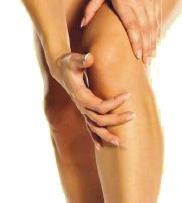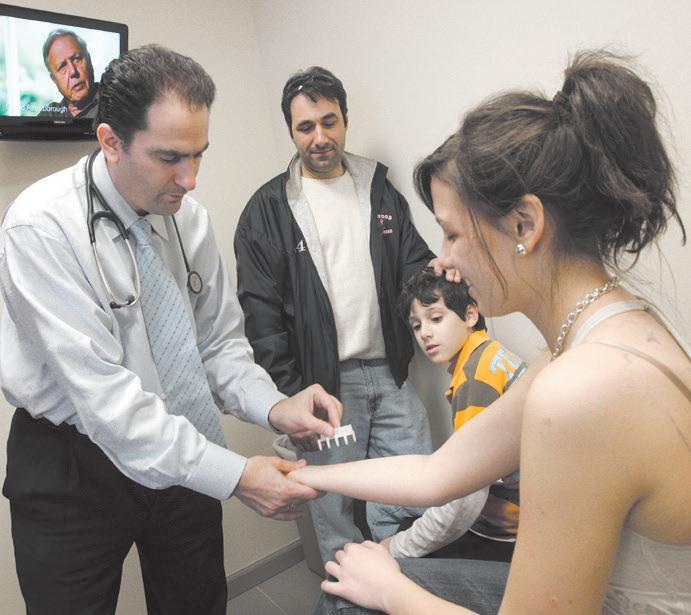

























Hitting the streets provides some immediate health benefits, and some long-term rewards, too.
Regular jogging sessions can improve heart and immune function, lessen stress and anxiety, help with maintaining flexibility and may help you lose weight with the proper diet modification. As little as 1 to 2.5 hours of jogging a week, even at a slow or moderate pace, can also lead to big dividends when it comes to longevity. An extensive Danish study found that regular jogging increases men’s life expectancy by more than six years, while women’s jumped more than 5.5.
Another study confirmed that any amount of running was associated with a 30% decrease in the risk of dying from heart disease — a critical element, since heart disease is responsible for so many deaths world wide. Running helps fight blood clots in blood vessels and arteries, while also supporting healthy blood
pressure and diminished cholesterol. Jogging also translated into 23% less risk of dying from any form of cancer.
Runners force their cardiovascular system to generate more capacity, opening more small arteries and capillaries to help lower blood pressure. Jogging lowers your blood sugar, decreases inflammation and stimulates our brain. (One researcher noted that vigorous physical activity has proven to be the best preventative so far against Alzheimer’s) Running also helps regular hormone levels, maintain healthy weight and speeds up digestion, a trio of processes that can have big health impacts.
Novices should gradually increase their intensity, rather than trying to immediately jog long distances. Walking will improve your physical readiness: Once you can briskly walk for two hours
without tiring, begin short intervals of running. Try 10 minutes at first, and gradually increase to 30 minutes. Continue lengthening the time you run, with shorter intervals of walking, until you’ve found a comfortable pace.
Researchers noted that the best results
St. Charles Hospital, a proud member of Catholic Health and the healing ministry of the Diocese of Rockville Centre, is a 243-bed, acute care community hospital located in Port Jefferson, NY, and has served the residents of the Three Village area for more than 115 years.


The non-profit hospital features three centers of excellence: Maternal/Child services, Orthopedics and Rehabilitation. St. Charles is recognized as the region’s most comprehensive rehabilitation provider and is the only hospital on Long Island with CARF-accreditation for its inpatient and outpatient rehabilitation program for children and adults.
St. Charles also offers services in general surgery and surgical subspecialties such as colon/rectal, urology, bariatric, neurosurgery, GYN oncology, female pelvic floor disorders, and ENT. In addition, St. Charles offers emergency medicine and acute medical care for adult and pediatric inpatients. St. Charles’ subspecialty care services
include cardiology, pulmonary, gastroenterology, infectious diseases, nephrology, neurology, epilepsy, and stroke care. Other services include diagnostic imaging and laboratory. St. Charles is known for its nationally accredited Sleep Disorders Center and has recently opened a new Center for Hyperbaric Medicine & Wound Care.
In addition, St. Charles has received prestigious recognition from Healthgrades, as well as the Joint Commission’s Advanced Certification in stroke, palliative care, and total hip/knee replacement. Other achievements include the American Heart Association/American Stroke Association’s “Gold Plus Quality Achievement Award” for outstanding stroke care; AHA/ASA’s “Target: Type 2 Diabetes Honor Roll,” and IDSA Antimicrobial Stewardship Center of Excellence designation. St. Charles has also received accreditations from the American College of Radiology, the American Diabetes Association, the American Academy of Sleep Medicine and the Commission on Cancer.
were, in fact, at this slow or moderate pace — and for no more than 2.5 hours per week. Those who jogged longer and especially those who ran at a higherthan-average rate actually had worse longevity outcomes. Slow and average runners fared better.
200 Belle Terre Road Port Jefferson, NY 11777 (631) 474-6000 • chsli.org/st-charles-hospital
Jogging has numerous physical and mental benefits, and it’s an activity you can do alone or in a group









































While most parents are good at keeping track of vaccines their kids need to stay healthy, many adults don't realize there are immunizations important for keeping themselves heart-healthy, as well.
Adults, especially those with a history of heart disease or stroke, should take steps to stay up-to-date on preventive vaccines, particularly for the flu and COVID-19.
While many experience just a few days of aches and chills, the flu can be deadly for some, including young children, the elderly and those with chronic conditions like heart disease, stroke and diabetes. There has also been research linking flu infection to cardiovascular disease (CVD). Getting a flu shot can not only prevent the flu, it may also reduce the risk of having a heart attack or stroke.
In fact, a study published in Stroke found that, among a group of people hospitalized for various reasons, those who experienced a flu-like illness within a month of their hospitalization were 38% more likely to have a stroke. Receiving the flu vaccine within a year prior to hospitalization lowered a person's stroke risk to 11%.
"Getting an annual flu shot should be part of routine health care for all individuals, especially for people who are already living with chronic health conditions that put them at higher risk for heart attacks or strokes," said Eduardo Sanchez, M.D., M.P.H., FAHA, American Heart Association chief medical officer for prevention. "The potentially serious complications of the flu are far greater for those with chronic diseases. This is true not just for older people but even those age 50 and younger who have a history of high blood pressure, heart disease or diabetes."
At the onset of the pandemic, the American Heart Association established the COVID-19 Cardiovascular Disease Registry, which found people with or at risk for CVD were more likely to become infected with and die from COVID-19. Additionally, the research found many people experience heart and vascular disease after getting COVID-19.
A study from the registry published in Circulation: Arrhythmia and Electrophysiology found new-onset atrial fibrillation in 1 in 20 patients hospitalized
with COVID-19. Additionally, research also found people hospitalized with COVID-19 had a higher risk of stroke compared with people who had similar infectious conditions such as influenza or sepsis.
"We can't stress enough the connections between COVID-19 and cardiovascular disease," Sanchez said. "There is clear evidence that people who have heart and vascular disease and even those with CVD risk factors are more likely to get COVID and to have more severe complications from the virus."
While flu and COVID-19 vaccines are of the utmost importance, there are a number of other immunizations that can help keep people heart-healthy.
The pneumococcal vaccination protects against a common cause of severe pneumonia and is especially
important for people 65 and older, and others with certain underlying medical conditions. This type of pneumonia can be deadly, especially for people already at high risk for health complications, including CVD. One shot is usually good for several years, although you may need a second one later depending on your age at your first shot.
A viral infection caused by the chickenpox virus, shingles has been linked to an increased risk of stroke. More than 99% of people age 40 or older in the United States may carry the dormant chickenpox virus, also known as the varicella-zoster virus, and not even realize it.
The Centers for Disease Control and Protection (CDC) recommends that adults 50 years and older get two doses of the shingles vaccine called Shingrix (recombinant zoster vaccine) to prevent shingles and the complications from
the disease. Adults 19 years and older who have weakened immune systems because of disease or therapy should also get two doses of Shingrix, as they have a higher risk of getting shingles and related complications.
Your doctor or pharmacist can give you Shingrix as a shot in your upper arm which may cause soreness for a few days.

Shingrix provides strong protection against shingles and PHN. In adults 50 years and older who have healthy immune systems, Shingrix is more than 90% effective at preventing shingles and PHN. Immunity stays strong for at least the first 7 years after vaccination. In adults with weakened immune systems, studies show that Shingrix is 68%91% effective in preventing shingles, depending on the condition that affects the immune system.
Learn more about important immunizations and find other preventive health tips at www.heart.org.
Enhance your colonoscopy at Advanced Surgery Center of Long Island with GIGenius™. This is a new technology that utilizes artificial intelligence to help your physician detect and remove potentially precancerous polyps. Advanced Surgery Center of Long Island is proud to be the first endoscopy center on Long Island to offer this technology with all colonoscopy screenings.
Colonoscopies can save lives. Get your enhanced screening at Advanced Surgery Center of Long Island. Call (631) 828-3400 to schedule your screening.

Robert J. Baranowski, M.D. Gary R. Bernstein, M.D. Neva Castro, M.D. William J. Cohn, M.D. H. Matthew Cohn, M.D. Eugene A. Coman, M.D.
Emily Glazer, M.D. Howard A. Keschner, M.D. Eugene Licht, M.D. Seth E. Persky, M.D. Ramona Rajapakse, M.D.
1500 Route 112 Building #5 Port Jefferson Station, NY 11776 advancedasc.com
Cardiovascular disease is the No. 1 cause of death in the United States and globally. Studies throughout the past two decades indicate more than 80% of all cardiovascular events may be prevented by a healthy lifestyle and management of risk factors.
To help Americans measure their cardiovascular health and make meaningful lifestyle changes, the American Heart Association introduced Life's Essential 8, a checklist that explains eight habits and health measures that affect heart and brain health and overall well-being.

The checklist incorporates knowledge gained from more than 2,400 scientific papers on cardiovascular health published since it was originally introduced as Life's Simple 7 more than a decade ago. It has been expanded to apply to anyone age 2 and older, and now includes sleep as the eighth cardiovascular health component, reflecting findings that healthy sleep is essential for optimal heart and brain health.
"The idea of optimal cardiovascular health is important because it gives people positive goals to work toward at any stage of life," said Donald M. Lloyd-Jones, M.D., Sc.M., EAHA, president of the American Heart Association and chair of the department of preventive medicine at Northwestern University's Feinberg School of Medicine. "We felt it was the right time to conduct a comprehensive review of the latest research to refine the existing metrics and consider any new metrics that add value to assessing cardiovascular health for all people."
Start making positive changes to improve your heart and brain health with these eight essential steps:
The checklist offers a simple questionnaire to assess your eating pattern. A heart-healthy diet encompasses a high intake of fruits, vegetables, nuts and legumes; whole grains and fat-free and low-fat dairy; lean protein; and low intake of sodium, red and processed meats and sweetened foods and drinks. Eat whole foods and rely on healthy non-tropical oils (like olive and canola) for cooking.
Nicotine makes your heart rate and blood pressure skyrocket while carbon monoxide and tobacco rob your heart, brain and arteries of oxygen. There are about 4,000 chemical components found in cigarettes; at least 250 of them are harmful
to your health. Reducing your health risk means eliminating exposure to any form of nicotine, including cigarettes, e-cigarettes and vaping devices, as well as limiting your exposure to secondhand smoke.
For most adults, the target level of moderate physical activity (such as walking) is 150 minutes or more per week or 75 minutes per week of vigorousintensity physical activity. Kids ages 6 and older need 1 hour or more of play and structured activities per day.
Getting a good night's sleep is vital to cardiovascular health. Measured by average hours of sleep per night, the optimal level is 7-9 hours daily for adults. Ideal daily sleep ranges for children are 10-16 hours per 24 hours for ages 5 and younger; 9-12 hours for ages 6-12; and 8-10 hours for ages 13-18.
Although the measure of body mass index (BMI) is not a perfect metric, it is easily calculated and widely available; therefore, BMI remains a reasonable gauge to assess weight categories that may lead to health problems. A BMI of 18.5-24.9 is associated with the highest levels of cardiovascular health.
Adults should get an average of 7 to 9 hours of sleep per day.

Non-HDL ("bad") cholesterol, rather than total cholesterol, is a reasonable predictor of cardiovascular risk. NonHDL cholesterol can be measured without fasting, which means it can be assessed at any time of day and reliably calculated.
When there is not enough insulin or the body does not use insulin efficiently, blood glucose levels accumulate in the
bloodstream. Hemoglobin A1c readings measure your long-term blood glucose control. A normal A1c is below 5.7%; between 5.7%-6.4% indicates pre-diabetes.
An optimal blood pressure is less than 120/80 mm Hg while hypertension is defined as a 130-139 mm Hg systolic pressure (the top number in a reading) or 80-89 mm Hg diastolic pressure (bottom number).




Various factors have helped to improve breast cancer survival rates, and education about the disease is certainly among them. Women are their own greatest allies against breast cancer, and learning to spot its signs and symptoms is a great first step in the fight against this potentially deadly, yet treatable disease.
Each October, it seems like the whole world turns pink in the name of breast cancer awareness. From fundraisers to billboards, clothing and social media campaigns, that ubiquitous pink ribbon is everywhere. Of course, there’s a clear need for awareness, as 1 in 8 women on Long Island will develop invasive breast cancer in their lifetime. But even with the October blitz, myths and misconceptions remain widely circulated among women of all ages.
Susan Samaroo is the executive director of The Maurer Foundation (www. maurerfoundation.org), a nonprofit organization in Melville established in 1995 with one goal in mind — to save lives through breast education. Their interactive workshops held in schools, colleges and community locations debunk long-held breast cancer myths, teach people how to lower their risk through lifestyle modification, and provide instruction to find breast cancer in its earliest stages when it is easiest to treat.
“We believe that it’s important to educate young people specifically and give them the information they need early on,” said Samaroo. “It’s never too early to learn what to look for and how to make positive changes that reduce breast cancer risk.”
The foundation educates roughly 20,000 people each year, the majority in co-ed settings. And Samaroo noted that they tend to hear the same rumors about breast cancer year after year. Let’s set the record straight on some of the most common myths.
MYTH: If you don’t have a family history, you won’t get breast cancer.
FACT : While family history is an important factor when considering potential risk, the National Institutes of Health reports that around 85 percent of people diagnosed with breast cancer do not have a family history.
For people that do have a family history, it’s critical to have a conversation with your doctor as soon as possible.
Mammograms and other screening may be recommended as early as age 25, and in some cases, genetic testing is warranted.
Having certain genetic mutations causes an individual’s risk to skyrocket, and preventative medication or surgery could be necessary.
MYTH: Only older women get breast cancer.
FACT : There are actually two false statements here. First, the age factor. According to Eileen Pillitteri, program manager of The Maurer Foundation, approximately 12,000 women in their 20s and 30s receive a breast cancer diagnosis each year.
Furthermore, men can and do get breast cancer. The Centers for Disease Control and Prevention (CDC) states that 1 in 100 men will be diagnosed with breast cancer, making it critical for both men and women to familiarize themselves with the look and feel of their breasts and check regularly for lumps, discharge and changes in appearance.
FACT : Some people believe that having larger breasts reflects a greater risk of cancer, but that doesn’t matter. It’s worth noting, however, that some women’s breasts are more difficult to screen for abnormal growths.
“An annual mammogram is the best overall screening test for breast cancer. There are some limitations, especially in women with dense breast tissue,” said Dr. Erna Busch-Devereaux, chief breast surgeon at Huntington Hospital,

Northwell Health. “Having dense breasts means that there is not a lot of fatty tissue present in the breasts. These breasts are mostly glandular and the X-rays don’t penetrate that tissue as well, so the picture is not as clear. Finding cancer can be more difficult with dense breasts — it’s like finding a snowball (cancer) in a snowstorm (background breast tissue).”
Your doctor will let you know if you have dense breasts. Different types of screening, such as 3-D mammograms, ultrasound or MRI might be suggested for a clearer picture.
MYTH: Your deodorant or your bra could give you cancer.
FACT : As of right now, there is no scientifically-backed evidence showing an increase in breast cancer risk for women who use antiperspirants or deodorants, though there are “general concerns surrounding the impact of environmental and consumed chemicals on our health,” Busch-Devereaux said, adding that more study is needed.
And as for the rumor that wearing tight bras with underwire or any other type of bra can cause breast cancer by obstructing lymph flow? “That’s completely unfounded,” Pillitteri said.
BREAST CANCER MYTHS continued on page10The American Cancer Society urges women to take note of how their breasts normally look and feel. That knowledge is vital because it helps women recognize when something does not look or feel good to the touch with their breasts. Screening alone may not be sufficient, as the ACS notes that mammograms do not find every breast cancer.
When women are well acquainted with how their breasts look and feel, they’re in better position to recognize any abnormalities, which may or may not be indicative of breast cancer. The ACS reports that the following are some potential warning signs of breast cancer.
• A new lump or mass: The ACS indicates that this is the most common symptom of breast cancer. A lump or mass that is cancerous is often painless, but hard and has irregular edges. However, lumps caused by breast cancer also can be soft, round and tender. Some even cause pain.
• Swelling: Some women experience swelling of all or part of a breast even if they don’t detect a lump.
• Dimpling: The skin on the breast may dimple. When this occurs, the skin on the breast sometimes mimics the look of an orange peel.
• Pain: Pain on the breast or nipple could indicate breast cancer.
• Retraction: Some women with breast cancer experience retraction, which occurs when the nipple turns inward.
• Skin abnormalities: Breast cancer may cause the skin on the breast to redden, dry out, flake, or thicken.
• Swollen lymph nodes: Some women with breast cancer experience swelling of the lymph nodes under the arm or near the collarbone.
The presence of any of these symptoms merits a trip to the doctor. Women with these symptoms should not immediately assume they have breast cancer, as the ACS notes that various symptoms of breast cancer also are indicative of non-cancerous conditions that affect the breasts.
Continued from page 9
MYTH: Lifestyle doesn’t change your cancer risk.


FACT : Across the board, limiting or avoiding alcohol consumption and eating a well-rounded, nutritious diet can help lower your risk of many cancers.
When it comes to breast cancer specifically, other choices you make can make an impact as well, but the specifics can be complicated.

“Having children at a young age and having multiple children results in a reduced breast cancer risk, but this protection is seen decades later. In the short term, there is an increased risk for breast cancer after having a child which is associated with pregnancy-related hormone surges,” Pillitteri explained.
Contraception is another tricky topic. Hormonal IUDs and oral birth control pills can increase breast cancer risk, but they can also greatly reduce the risk of ovarian and endometrial cancers, Pillitteri said. Other health professionals, including Dr. Busch-Devereaux, said that birth control pills don’t appear to increase overall breast cancer risk.
Healthcare organizations agree that most types of hormone replacement therapy (HRT) to cope with symptoms of menopause does increase breast cancer risk.
The takeaway: “It’s important to talk to your doctor about the products that are right for you based on your individual risk factors,” Pillitteri said.

In the end, risk of breast cancer can vary from person to person based on genetics, body type and lifestyle. But it’s never too late to make positive changes.
“Eat a healthy, well-balanced diet, exercise, maintain an average weight, avoid smoking or vaping, and limit alcohol — things that are good for overall health are good for the breasts,” BuschDevereaux said.
Make sure you have an annual mammogram screening beginning at age 40. If you have a family history or genetic mutations, talk to your doctor about when to start screenings.
And don’t be embarrassed if it’s been a while since your last mammogram. The important thing is to go.
“Sometimes women are too worried to go for a mammogram, or they delay seeking care because they’re afraid,” Busch-Devereaux said. “We stand an excellent chance of curing cancer when it is found early, so mammograms are very important and should always be encouraged. Additionally, women shouldn’t feel afraid or embarrassed to come in for an evaluation if they feel a lump or notice a change in their breast and haven’t gone for a mammogram. We’re here to help.”
'An annual mammogram is the best overall screening test for breast cancer.'
— DR. ERNA BUSCH-DEVEREAUX
As you age, you'll notice several parts of your body change. You may find that you're achy or can't move as fast as you used to. One area of your health you may not think about changing as you age is your eyesight.
"Vision changes are a natural part of aging," said optometrist Dr. Inna Lazar. "But so many Americans don't get their eyes regularly examined and aren't proactive about their eye health. There are also many simple fixes for aging eyes, including affordable reading glasses and innovative eyewear solutions."
Just like you inherit your eye color from your parents, they may pass down eye diseases and conditions that develop as you age. Talk with your family about their eye health history to determine if you're at higher risk for developing an eye disease or condition. Make sure to let your primary care physician and optometrist know about any genetic eye conditions so you can be proactive about diagnosis and care.
If you want to take care of your sight but don't know where to start, check out these five tips for protecting your eyes as you age.

Our eyes change slowly as we age, so you might not notice eye issues immediately. One common eye condition you'll likely develop as you age is presbyopia, the gradual loss of your ability to focus on nearby objects. A telling sign of this condition is holding books, newspapers and other reading materials farther away so you can read them. While annoying, this eye problem isn't serious and can often be managed with reading glasses or bifocal glasses.

Having a healthy, balanced diet isn't just good for your waistline. According to the American Academy of Ophthalmology, nutrition can help protect your eyesight. Focus on eating eye-healthy foods like orange-colored vegetables and fruits like carrots, cold-water fish with omega-3 fatty acids and leafy green vegetables.


An eye exam can identify potential eye issues in their early stages when they're easiest to treat. According to WebMD, if you don't have existing eye issues and are younger than 40, you should get a






routine eye exam every 2 years. As you get older, exams should be more frequent to catch any changes to your sight. If you are experiencing symptoms or have a family history of eye problems, it's a good idea to have a comprehensive dilated eye exam. This exam can help identify common vision problems as well as glaucoma and other eye diseases.
When you think of eye protection, you probably imagine safety goggles, eye shields and sports glasses. But one piece of eye protection you should use regularly is a pair of sunglasses. According to the American Optometric Association, overexposure to solar radiation over time can increase your risk of cataracts, eye cancer and macular degeneration. You can protect your eyes by purchasing sunglasses that block 100% of UV-A and UV-B radiation.





Just like when you exercise your muscles, your eyes can become fatigued from overuse. If you spend most of your day looking at screens, you may experience eyestrain. To give your eyes a break, look away from your


screen every 20 minutes at something 20 feet away for 20 seconds. Also, consider using blue light reading glasses which block 30% of potentially harmful blue light produced by computers and other artificial and natural sources, including the sun.




e’ve learned a lot about this disease recently, but there are still questions.

Let’s break down what we know, and what we don’t know, about an issue that impacts some 6.5 million Americans, according to the Alzheimer’s Association.
Risk factor: Age remains the biggest risk factor when discussing Alzheimer’s. Symptoms appear for most after the age of 65. Brain-imaging technology has helped in identifying buildups of special kinds of proteins related to the disease, making it easier to diagnose before obvious symptoms begin to emerge.
Lifestyle choices: Eating healthy foods, exercising and getting the proper amount of sleep, and remaining social and upbeat are preventative measures you can take, researchers say. One study cited by the AARP showed that lifestyle changes may reduce your risk by as much as 35%.
Racial Disparity: African Americans are twice as likely as Caucasians to develop Alzheimer’s. Hispanics are 1.5 times more likely than whites. Other socioeconomic factors like income,
education level and even where you live seem to play a role, too.
Linked genes: APOE, which has several forms, has been linked to increased risk of Alzheimer’s — specifically a APOE e4 protein. Your risk increases if you have a copy of this protein from both parents. On the other hand, APOE e2 actually reduces your risk of getting Alzheimer’s.
Specific triggers: Scientists still don’t know what causes abnormal proteins to begin depositing in our brains, or how they damage our neurons. A small percentage
of patients have a build-up of plaque, but are never diagnosed with Alzheimer’s — and that also remains a mystery.
How the genes work: Scientists know that this disease is most likely the result of interactions between dozens of genes. But we haven’t successfully mapped out how these complex processes lead to Alzheimer’s.
Medicines that will help: There are available drugs that may offer limited relief with Alzheimer’s symptoms, but


none have been shown to cure or even slow down the disease. Some pharmaceutical companies have decided to halt development projects for Alzheimer’s drugs. That’s because the failure rate for these drugs has been 99%, according to the AARP.
What else matters: Researchers are also still studying whether certain social factors may have a causal link, or if others may help people build up individual resilience against Alzheimer’s.


We deliver 2 nutritious, a ordable meals per day, Monday through Friday, to community residents regardless of nances or age who are:
• Homebound
• Convalescing from surgery or serious illness
• Dealing with a physical or mental disability that prevents them from preparing meals
We serve Stony Brook, Setauket, East Setauket, Port Je erson, Port Je erson Station, Mt. Sinai, Miller Place, Terryville, North Coram, North Centereach and North Selden REFERRAL FROM A MEDICAL PROFESSIONAL IS NOT REQUIRED. ANYONE CAN RECOMMEND A CLIENT. Call 631-689-7070, email us at 3villagemow@gmail.com Or visit us on the web at 3villagemealsonwheels.org





















If you are living with pain and discomfort in your feet, legs, thighs or butt, it may be a sign of a serious health problem. Many adults in the United States are suffering and may be at risk of amputations of their toes, feet or legs as a result of an undetected disease known as peripheral artery disease (PAD).

PAD affects the blood vessels outside the heart, reducing blood flow to the area with the diseased blood vessel. In the most common type of PAD, lower extremity PAD, blood flow is reduced to your legs and feet.
Learning more about PAD is important for detecting problems and getting early treatment so you can avoid devastating complications such as amputation or even death.
The most common symptoms of PAD are burning, aching, numbness, fatigue or discomfort in your leg or hip muscles
while walking. The symptoms are caused by your legs not getting the blood they need. This pain usually goes away with rest and returns when you are active again.
"These symptoms can impact a person's quality of life, making it difficult to walk and hard to do usual activities at home and work," said Amy W. Pollak, MD, American Heart Association volunteer expert serving as a leader of the national PAD Collaborative and cardiovascular medicine physician at Mayo Clinic. "For some, PAD can progress to cause pain when you are resting and even amputation of your toe, foot or leg."
PAD affects more than 8.5 million people in the U.S., the majority of whom are 65 years and older, according to the American Heart Association.
Approximately 46-68% of patients with PAD also have coronary artery disease or cerebrovascular disease.
The number of people living with diabetes has risen dramatically over the last four decades. According to the World Health Organization, between 1980 and 2014, the number of people with diabetes rose from 108 million to 422 million.
The dramatic spike in diabetes cases in such a short period of time highlights just how big a threat the disease poses to the health of people across the globe. That makes now a perfect time to learn more about diabetes and what individuals can do to manage their disease.
Diabetes is a chronic disease related to how the body produces or utilizes insulin, a hormone that regulates blood sugar. Diabetes occurs when the pancreas does not produce sufficient insulin or cannot effectively utilize the insulin it produces.
What is the difference between type 1 and type 2 diabetes?
The WHO notes that more than 95 percent of the people with diabetes have type 2 diabetes. According to the American Diabetes Association®, type 2 diabetes occurs when the body does not use insulin properly, whereas type 1 occurs when the body does not produce insulin.
It’s important that individuals diagnosed with diabetes recognize that both types 1 and 2 can be managed. The ADA reports that diet and routine exercise are vital to managing type 2 diabetes. The ADA urges people who have recently been diagnosed with diabetes to speak with a registered dietitian nutritionist (RDN/RD) to find foods that are healthy and help them feel satisfied at the end of a meal. Lingering may compel people to make poor dietary choices that could make their condition worse.
The ADA’s “Nutrition Consensus Report,” published in 2019, is a comprehensive review of 600 research articles over a five-year span conducted by a panel of scientists, doctors, endocrinologists, diabetes educators, and dietitians. That review emphasized the significance of working with an RDN, noting that recommendations about diet for diabetes patients must take factors specific to each individual, including their life circumstances and preferences, into consideration. The review also noted that each person responds differently to different types of foods and diets, so there is no single diet that will work for all patients.
"We see PAD more commonly in people living with diabetes, people who smoke and people with other common
risk factors for heart disease, like high cholesterol, high blood pressure and obesity," Pollak said.
While some causes of PAD are beyond your control, the best method to prevent PAD is managing risk factors by making lifestyle changes including quitting smoking, managing diabetes and high blood pressure, staying active and eating a heart-healthy diet.
Working closely with your health care professional at the first sign of PAD is an important step in achieving the best treatment outcomes and avoiding serious complications like amputation.
"PAD is a lifelong medical condition, but people with PAD can lead active and long lives," Pollak said. "If you notice walking is more difficult, keeping up with others is hard or you have pain when you walk, talk with a doctor and describe when it happens and how it feels. Don't be afraid to get a second opinion."
Visit www.heart.org/PAD to learn more.
Though there is no “one-size-fits-all” diet for people with diabetes, the ADA created the Diabetes Plate Method as a simple way to help people with diabetes create healthy meals. The method urges individuals to fill half their plate with nonstarchy vegetables, such as asparagus, broccoli, green beans, and salad greens.

One-quarter of the plate should be filled with lean proteins such as chicken, lean beef (cuts like chuck, round or sirloin), or fish (salmon, cod, tuna). Plant-based sources of protein also count,
and these include beans, lentils, hummus, falafel, edamame, and tofu, among other foods. The final quarter of the plate should be reserved for foods that are higher in carbohydrates, such as whole grains (brown rice, quinoa, whole grain pastas), beans and legumes, or even fruits and dried fruit.
More people than ever before are being diagnosed with diabetes. Diet plays a significant role in managing life with diabetes. More information can be found at diabetes.org.
Pet diets are more elaborate than ever. Where once a few brands dominated the pet food market, now a trip to the pet store yields dozens of options. Fish food, choices for small animals and reptiles and meals for birds are seemingly just as diverse.
Pet parents may consider food options carefully when making initial decisions concerning what to feed their pets, even consulting their veterinarians about their options. But even after careful consideration, pet owners may ultimately need to change their furry friends’ diets. Here are some instances when a dietary overhaul may be necessary.






A pet who is suddenly acting lethargic and weak may need a change of diet. Certain foods high in antioxidants can help boost immune system response and help pets fight illnesses or recover from surgeries, while others may cause nutritional deficiencies. Consult with a vet for an evaluation before making any changes.

Certain formulations of food are designed for stages of development. For example, puppy foods have a specific profile for feeding fast-growing pups, and also may be recommended for pregnant or nursing mothers. Adult formulas and senior formulas have recipes for those stages of life
(i.e., fewer calories or certain nutrients for joint health). When a pet crosses a life stage, a new food may be recommended.


: Vets often recommend certain diets based on the presence of disease or illness. A cat that is diabetic may need a food that helps manage that disease. A dog with kidney disease or the presence of crystals in its urine may require a food that helps treat urinary issues.

Concern over a pet’s weight gain or weight loss could warrant a change to its diet. There are special foods designed to help animals maintain healthy weights.
Pets may experience allergic reactions to environmental triggers or ingredients in food. If a vet has ruled out other causes for itchy skin, loss of fur/feathers or other allergic symptoms, a new food may help alleviate symptoms.
Sometimes pets no longer enjoy eating the food they have been consuming for a while. Subtle changes in the formulation may be off-putting or boredom with a diet could set in. While owners shouldn’t change pets’ diets every time an animal turns up its nose at feeding time, a different flavor or food could add some welcome variety.
People choose to follow a vegan lifestyle for a variety of reasons. Some may be concerned about livestock’s effects on climate and the environment in general, while others have strong feelings about the way animals are treated during the food production process. Still others may have received information from their doctors that a plant-based diet can help reduce their risk for diabetes, heart disease and certain cancers.
Whatever the reason for embracing a vegan lifestyle, individuals should do their research first so their transition is safe and smooth.
Being vegan is different from vegetarian eating. Rather than simply avoiding meat like vegetarians, vegans do not bring any animal products into their homes. This includes eggs, milk, cheese, and any other ingredient derived from animal sources, including honey. Vegan. com says a vegan diet never contains any byproducts of animal agriculture, such as lard, gelatin or whey.

Certain foods are staples of a vegan diet. These include grains, beans, nuts, tofu, tempeh, nut milks, fruits and berries, and vegetables. In addition to these items, a greater number of vegan-friendly products are available to help those who are vegan enjoy their favorite indulgences without compromising their ideals. These include vegan chocolates, “cheeses,” coffee creamers, and more.
Most natural food stores and even mainstream supermarkets sell at least one vegan alternative for every popular non-vegan food. Vegan food companies continue to produce delicious and innovative items to make vegan living even more convenient.

Those who want to switch to vegan eating can schedule chats with their doctors about the pros and cons of removing animal products from their diets. This is a safer way to know if there will be any medical complications to doing so. Avoiding animal-based foods does not typically lead to any negative consequences, though individuals may need to rely on supplementation to ensure they get enough vital nutrients in their diets.

Rather than focusing on what a person can’t eat, he or she can be inspired by all of the new products to try and recipes to make at home. This can make veganism seem less like a sacrifice and more like an active choice. One can try switching over for a few weeks to see how he or she feels. Dr. Neal Barnard of the Physicians Committee for Responsible Medicine recommends starting by collecting a couple of plant-based recipes first and trying them out over the course of one to two weeks. Then follow that with a three-week commitment to veganism.
The transition to a vegan diet and lifestyle can be made gradually and with purpose for those who no longer want to consume animal products.






Su olk County now has a new weapon in the ongoing war against everything from pollen and dust mites to fatal reactions to peanuts, thanks to Dr. Gadi Avshalomov. e board-certi ed specialist in adult and pediatric allergies, asthma and clinical immunology opened his new Center for Allergy and Immunology at 120 North Country Road in Port Je erson.“It has always been our plan to have a full-service center for those who su er allergy and immunology conditions,” Dr. Avshalomov explained. “ e center is really going to help a community that lacks these important services. I don’t know of any real center in Su olk that dedicates itself wholly to allergy su erers and asthmatics.”
e new center couldn’t have come at a more pivotal time. Su olk, as well as the rest of the world, is in the middle of an “allergy and asthma epidemic, and post Covid-19 there is a desperately growing need for immunology services” Dr. Avshalomov explained. With each passing day, more and more people are diagnosed with allergies or have heard of someone who could have a fatal reaction to something as common as a peanut. Many others su er from immune driven conditions. Dr. Avshalomov says that, according to recent studies, 20 percent of the population su ers from regular allergies. Upwards of four percent of the population have allergic reactions to the proteins in peanuts and tree nuts. “Allergies like this are becoming a bigger and bigger problem in our communities,” he said. “People are developing allergies to relatively banal products that anyone can nd in their home or workplace.”
Dr. Avshalomov blames what he calls the hygiene hypothesis for the epidemic. Basically, 21st century residents are living in ultra-sterile homes. is lifestyle reduces the frequency of infectious illness. ey can go their entire lives without being exposed to the germs, oils and proteins they could have an allergic reaction to.
As a result, the immune system nds other things to develop, such as allergies. When they are nally exposed, the reactions are far greater, he



said. Modern medicine has also helped prolong and propagate the problem. “Once upon a time, people with asthma used to die,” he said. “Now, thank God, they’re living full lives with their condition, but at the same time they’re passing the problem down to the next generation.”
Today these genetic curses can be thwarted at Dr. Avahslomov’s Center and his three-step approach to battling most allergies. First, the patient comes in for an appointment where their symptoms are scrutinized and analyzed with the utmost care and attention. Since he started practicing in 2000, Dr. Avshalomov has seen it all, from runny noses to rash-raw skin. Patients have come to him with eczema and dermatitis, sinus and pulmonary problems all the way to having their throats swollen closed. “It’s fascinating how tiny invisible things can a ect us to such a degree,” he explained. “ ese allergens don’t actually harm us, it’s just that our immune system perceives that it’s going to do us


harm and responds accordingly. at’s why knowing how to master the immune system is so important.”
rough a battery of tests, Dr. Avshalomov begins to root out suspects – the allergens that are causing the uncomfortable physical reactions that patients are su ering from. He notes that most patients su er from environmental allergies – dust mites, cats and dogs, pollen or seasonal changes. Many also su er from “benign neglect,” he said. “Many times the symptoms start out small, so they don’t seek an allergist’s help,” he said. “ ey fall into a trap that only leads to more severe symptoms. ey then try to treat the problem with overthe- counter drugs. But a er they try about 10 to 20 di erent pills and all the sprays, they’re still su ering because those medications are nothing more than Band-Aids. e only e ective treatment is an allergy shot.”
Once the tests are completed, Dr. Avshalomov goes to his new state-of-the-art lab in the center and arrests these allergic reactions with custommade sera and allergy shots.
“Nothing is ever generic or ‘one size ts all,’” he said. “Everyone has a unique reaction to allergens, so everyone needs a unique treatment regimen,” he said. For patients with severe food allergies, Dr. Avshalomov carefully takes them through every step of the process. He also develops an action plan with them so both the patient and their families know how to respond when an emergency reaction – which could be quite dangerous – takes hold. “Education is the cornerstone of this practice,” he said. He also has a special respiratory lab where patients walk on treadmills and are put through a variety of exercise techniques so Dr. Avshalomov can accurately pinpoint just how activity and stress trigger their asthma. “ ese techniques have been around, but most patients don’t have access to them because their doctors do not have enough asthmatic patients,” he said. “We’re reaching that threshold.”
Avshalomov
of the
Board of
dad Phil
brother Ricardo look on
Like most things, sweets are fine in moderation. But if you find yourself regularly indulging, you could be setting yourself up for some serious health risks. Even if you don’t eat candy, you still might be getting far too much sugar in the form of added ingredients in items like soda, canned fruits, smoothies and yogurt. Worrisome government statistics have shown that U.S. adults are getting as much as 13% of their daily calories from sugar.
Sugars are always found in food that also contains carbohydrates, including grains, dairy, some vegetables and fruits. These naturally occurring sugars are perfectly healthy because whole foods and dairy also contain high amounts of things like fiber, proteins, calciums, minerals and antioxidants. The body digests these things more slowly, leaving sugar to provide energy in the meantime. Problems occur when you ingest too much sugar, in particular sugars added by manufacturers in an effort to extend shelf life or increase flavor.
Excessive consumption of sugars, in candy and as an added ingredient, may create an imbalance in your bloodstream that causes irreparable damage to your liver. Diabetes then leads to other
severe health problems. There is a clear relationship between high-sugar diets and cardiovascular health. One 15-year study showed that those who got between 17-21% of their daily calories via added sugars had a 38% higher risk of dying

More than 350,000 sudden cardiac arrests occur annually outside hospital settings. However, a hands-on emergency intervention like cardiopulmonary resuscitation (CPR), especially if performed immediately, can double or triple a cardiac arrest victim's chance of survival.
According to the American Heart Association, 70% of cardiac arrestselectrical malfunctions in the heart that cause an irregular heartbeat (arrhythmia) and disrupt the flow of blood to the brain, lungs and other organs - occur at home, but often family and friends who witness a child, spouse, parent or friend going into cardiac arrest hesitate to perform potentially lifesaving CPR for fear of making the situation worse.
"By equipping people with Hands-Only CPR training, we are
empowering them to spring into action if a loved one needs help, as the majority of cardiac arrests occur at home," said Dr. Anezi Uzendu, M.D., interventional cardiologist and American Heart Association volunteer.
As part of its Hands-Only CPR campaign, nationally supported by the Elevance Health Foundation, the American Heart Association aims to increase awareness about the importance of bystander CPR and offers these two simple steps:
1. Call 911.
2 . Push hard and fast in the center of the chest of the individual experiencing cardiac arrest.
Using the beat of a familiar song with 100-120 beats per minute, such as "Stayin' Alive" by the Bee Gees, can help you stay on pace with the necessary compressions.
"Being able to efficiently perform Hands-Only CPR in the moment can mean the difference between life and death, and by following these two simple steps we can increase someone's chance of survival from cardiac arrest," said Shantanu Agrawal, M.D., board certified emergency medicine doctor and chief health officer at Elevance Health.
"As a longstanding supporter of the American Heart Association, we remain focused on working together to improve health inequities in our communities by expanding access to training and increasing the number of people who learn and feel confident performing Hands-Only CPR to save lives," he said.
To watch a livestream video demonstration of Hands-Only CPR or download a first aid smartphone app, visit www.heart.org/CPR.
from heart disease compared with those who followed guidelines. Ingesting excess sugars also leads to obesity, since our bodies begin storing calories when they’re not immediately needed. Those who are grossly overweight are then at risk for related health issues like high blood pressure and heart disease, among others.
The leading sources of added sugars in the US diet are sugar-sweetened beverages and desserts and sweet snacks. Examples of desserts and sweet snacks are cookies, brownies, cakes, pies, ice cream, frozen dairy desserts, doughnuts, sweet rolls, and pastries.
Added sugars should be limited to half of your daily recommended sugar intake, according to the American Heart Association. For most American men, that equals no more than 150 calories. For most women, it’s no more than 100 calories.
That can be harder than you think: Candy and many other top sources for added sugars are obvious sources for extraneous calories, but these sugars are also found in soups, cured meats, bread and ketchup, among other products.
Overconsumption of sugar leads to diabetes, obesity and other preventable chronic disease.

It may not be widely known that women face unique risk factors for stroke throughout their lifetime. Things like pregnancy, preeclampsia and chronic stress can increase the risk for high blood pressure, a leading cause of stroke.
Cardiovascular disease, including stroke, is the leading cause of death among women, according to the Centers for Disease Control and Prevention (CDC), and 1 in 5 women will have a stroke. However, a large majority of strokes can be prevented.
Caring for yourself by understanding your risk factors can help reduce your risk for stroke and provide a better quality of life. Start managing your stroke risk with these tips from the American Stroke Association, a division of the American Heart Association:
The first step you can take in reducing your risk for stroke is knowing your blood pressure and keeping it in a healthy range. High blood pressure is the No. 1 preventable cause of stroke, according to the American Heart Association.
The best way to know your blood pressure is to have it measured at least once per year by a health care professional and regularly monitor it at home then discuss the numbers with a doctor. For most people, a normal blood pressure should be 120/80 mm HG or less.
In addition to properly monitoring blood pressure, maintaining a healthy weight, being physically active, eating healthfully and reducing or eliminating alcohol and tobacco usage can help control blood pressure. If you do develop high blood pressure, work with a health care professional on a plan to help manage it.
In the United States, high blood pressure during pregnancy is becoming more common, according to the CDC, and medical conditions including preeclampsia, gestational diabetes and blood clots during pregnancy all increase stroke risk during and immediately following a pregnancy.

Managing conditions like high blood pressure before getting pregnant helps keep you and your baby healthy during pregnancy and beyond. In addition, your health during and immediately after a pregnancy can shape the lifelong health of you and your child. If you're planning to become pregnant or are currently pregnant, it's important to regularly monitor your blood pressure.
Some stress is unavoidable but constant stress is not healthy. Chronic or constant stress may lead to high blood pressure and other unhealthy behavior choices, which can increase risk for stroke.

Based on findings in a Stress in America 2020 survey conducted by the American Psychological Association, the top sources of stress are money, work, family responsibilities and health concerns. Managing your stress and blood pressure can improve your overall health and well-being. Reclaim control of your schedule and build in time to invest in your health. Find 10 minutes every day to do something for you, like listening to music, meditating or going for a walk.
A stroke can happen to anyone at any point in life. Immediate treatment may help minimize the long-term effects of a stroke and even prevent death. Learn how to spot a stroke F.A.S.T:
Face drooping — Does one side of the face droop or is it numb? Ask the person to smile. Is the person's smile uneven?
Arm weakness — Is one arm weak or numb? Ask the person to raise both arms. Does one arm drift downward?
Speech difficulty — Is speech slurred? Is the person unable to speak or hard to understand? Ask the person to repeat a simple sentence like "The sky is blue."
Time to call 911 — If someone shows any of these symptoms, even if the symptoms go away, call 911 and get to a hospital immediately. Check the time so you'll know when the first symptoms appeared. Find more wellness tips at www.stroke.org.
Leah S. Dunaief
GENERAL MANAGER
Johness Kuisel
MANAGING EDITOR
Rita J. Egan
Heidi Sutton
Raymond Janis
EDITOR
John Broven
ADVERTISING DIRECTOR
Kathleen Gobos



Elizabeth Bongiorno Robin Lemkin Larry Stahl Minnie Yancey
Beth Heller Mason
DEPARTMENT
Janet Fortuna Sharon Nicholson
& SUBSCRIPTION
Murray
MANAGER
Sandi Gross
BUSINESS OFFICE
Meg Malangone
MANAGER
Courtney Biondo
Rob Alfano
Kathryn Mandracchia
Times Beacon Record Newspapers are published every Thursday. Address: P.O. Box 707, Setauket, NY 11733; telephone: 631-751-7744; email address: desk@tbrnewsmedia. com; fax: 631-751-4165; website: www.tbrnewsmedia.com. Entire contents copyright 2022.
Nearly half of all American adults have high blood pressure, or hypertension, according to the Centers for Disease Control and Prevention. Of those, about 75% don't have it under control, and many may not even realize they have it unless they experience other complications.
In fact, high blood pressure is a leading cause and controllable risk factor for heart disease and stroke as well as other issues such as kidney failure, vision loss and sexual problems. However, the American Heart Association recommends taking these simple steps to help control your levels and manage risks.
In most cases, normal blood pressure is 120/80 mm HG or less. Readings consistently higher than 130/80 are considered high blood pressure. Have your blood pressure measured at least once a year by a health care professional and regularly monitor it at home with a validated monitor then discuss the readings with your doctor. Getting accurate readings can help ensure the most appropriate treatment should any problems arise.
If you're overweight or obese, you're at increased risk of high blood pressure. Losing just 3-5% of your body weight can help improve your numbers. There are an abundance of plans and programs available that can assist with weight loss, and taking positive steps with a friend or family member may help with motivation.
To maximize health benefits and help keep blood pressure in the normal range, the American Heart Association recommends adults get at least 150 minutes per week of moderate activity, 75 minutes of vigorous activity or a combination of the two. Try activities like brisk walking, swimming, bicycling or dancing.

Making small, simple changes to your eating habits can go a long way toward keeping you and your family healthy. Eating fruits and vegetables, such as mangos, avocados and blueberries, can lower blood pressure over time. Other smart choices include nuts and seeds, whole grains, lean proteins and fish.

Smoking compounds risk factors for heart disease, such as high blood
pressure and diabetes, and the chemicals in tobacco smoke can harm your heart and blood vessels. Similarly, consuming alcohol excessively (more than two drinks per day) is associated with high blood pressure. Limiting alcohol consumption and stopping smoking — or avoiding secondhand smoke — can help reduce your risk.
If you develop high blood pressure, work with a health care professional to manage it.

Knowing how to correctly check your blood pressure is important, especially if your doctor recommends regular self-monitoring at home.
* Be still. Don't smoke, drink caffeine or exercise during the 30 minutes before measuring your blood pressure. Empty your bladder and take at least 5 minutes of quiet rest time before measuring.
* Sit correctly. Sit with your back straight and supported. Keep your feet flat on the floor and your legs uncrossed. Support your arm on a flat surface, such as a table, with your bicep at heart level. Place the bottom of the cuff directly above the bend of your elbow. Never take measurements over sleeves or other clothing.
* Measure at the same time every day. For greatest consistency, take readings at the same time daily, such as a set time in the morning and evening.
* Take multiple readings and record the results. Each time you measure, take 2-3 readings approximately 1 minute apart and record the results to share with your doctor.













































































































































Join us for Paint Port Pink during October. Bringing the community together in the fight against breast cancer. Learn more at paintportpink.org
When you go for a mammogram, you want a highly experienced breast radiologist, the latest technology and the most caring staff.
The Fortunato Breast Health Center’s board certified breast radiologists review more than 12,000 breast studies each year and compare your latest scans to multiple prior year scans to identify the smallest changes.

Our advanced 3D mammography system is designed to make screening more comfortable. It offers sharper, clearer images for improved diagnostic accuracy and delivers the lowest radiation dose of all FDA approved 3D mammography systems.
Our compassionate nurse navigators assist diagnosed patients through treatment and recovery, explaining every step of the journey while providing emotional support. Our center is warm and serene, and we even have heated robes.
If you’re uninsured or underinsured, resources are available for free or discounted screenings through the Suffolk County Cancer Services Program. Call (631) 548-6320.

Make your appointment for your annual mammogram, call (631) 476-2771.
